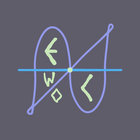
Neural networks have massively parallel network structures with many neurons and weighted connections. Neural networks are mathematical models inspired by brains. Traditionally computational intelligence consists of three major research areas: Neural Networks, Fuzzy Systems, and Evolutionary Computation. Computational intelligence is a rapidly growing research field including a wide variety of problem-solving techniques inspired by nature. It is desirable as a reference book for under-graduates in higher education, master and doctor graduates in the courses of computer science, computational intelligence, or fuzzy control and classification, and is especially dedicated to researchers and practitioners in industry.Ĭomputational intelligence is a component of Encyclopedia of Technology, Information, and Systems Management Resources in the global Encyclopedia of Life Support Systems (EOLSS), which is an integrated compendium of twenty one Encyclopedias. In particular, this book provides a number of formulae for implementing the operation extended on fuzzy-valued fuzzy sets and presents some basic structures of generalized uncertain fuzzy logic systems, as well as introduces several of methods to generate fuzzy membership uncertainty. Consequently, the membership uncertainty can be modeled by combining methods of conventional and type-2 fuzzy logic, rough set theory and possibility theory. This book generalizes fuzzy logic systems for different types of uncertainty, including - semantic ambiguity resulting from limited perception or lack of knowledge about exact membership functions - lack of attributes or granularity arising from discretization of real data - imprecise description of membership functions - vagueness perceived as fuzzification of conditional attributes. The fifth part contains papers that deal with modeling, simulation and optimization for real-world applications. The fourth part contains papers that deal with the hardware implementation of intelligent systems for solving particular problems. The third part contains papers with the themes of intelligent agents and social systems, which are papers that apply the ideas of agents and social behavior to solve real-world problems.

The second part contains papers with the main theme of pattern recognition, which are basically papers using soft computing techniques for achieving pattern recognition in different applications. The first part consists of papers with the main theme of intelligent control, which are basically papers that use hybrid systems to solve particular problems of control. The book is organized in five main parts, which contain a group of papers around a similar subject. Soft Computing (SC) consists of several intelligent computing paradigms, including fuzzy logic, neural networks, and evolutionary al- rithms, which can be used to produce powerful hybrid intelligent systems. In order to motivate young people to engage in the future development of fuzzy logic, fuzzy methodologies, fuzzy applications, etc., the editors invited a team of internationally respected experts to write the present collection of papers, which shows the present and future potentials of fuzzy logic from different disciplinary perspectives and personal standpoints.We describe in this book, new methods and applications of hybrid intelligent systems using soft computing techniques. New frontiers of knowledge are waiting to be explored.


The editors believe that, thanks to the drive of young researchers, fuzzy logic will be able to face the challenging goals posed by computing with words. The study of fuzzy logic and its practice spread all over the world, from Europe to Asia, America and Oceania. Fuzzy theories and implementation grew at an impressive speed and achieved significant results, especially on the applicative side. Zadeh in his seminal paper on Fuzzy Sets in 1965. The book aims at showing how fuzzy logic has evolved since the first theory formulation by Lotfi A. Throughout the chapters, key theories developed in the last fifty years as well as important applications to practical problems are presented and discussed from different perspectives, as the authors hail from different disciplines and therefore use fuzzy logic for different purposes. This book provides readers with a snapshot of the state-of-the art in fuzzy logic.


 0 kommentar(er)
0 kommentar(er)
